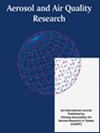Health Risk Assessment of Volatile Organic Compounds for Children in Indoor Air, Ulaanbaatar, Mongolia
IF 2.5
4区 环境科学与生态学
Q3 ENVIRONMENTAL SCIENCES
引用次数: 0
Abstract
This study presents levels of volatile organic compounds (VOCs) measured indoors for the first time in Ulaanbaatar, Mongolia, and quantifies the health risk for children emphasizing the urgent need to improve control for indoor VOCs sources. The 583 samples collected at 144 sites, including new buildings, old apartments, schools, workplaces, kindergartens, baishin, and Mongolian traditional gers , hospitals, schools, and shopping centers are analyzed. Formaldehyde was detected in 95.7% of the samples, while benzene was in 24.2%. The levels of benzene, toluene, and xylene in new and old buildings and apartments exceed the recommended values of AGÖF for volatile organic compounds in indoor air. The probabilistic Monte Carlo simulation method was used to estimate the risk exposure of four types of VOCs (benzene, formaldehyde, toluene, and m,p-xylene) to the health of the study population. The risk of cancer for benzene and formaldehyde is high in the age group of 7 months–4 years, m,p-xylene, and toluene show non-cancer risk in this age group.室内空气中挥发性有机化合物对儿童健康的风险评估,乌兰巴托,蒙古
本研究首次介绍了蒙古乌兰巴托室内挥发性有机化合物(VOCs)的测量水平,并量化了儿童的健康风险,强调了改善室内VOCs来源控制的迫切需要。分析了在144个地点收集的583个样本,包括新建筑、旧公寓、学校、工作场所、幼儿园、白信和蒙古传统蒙古包、医院、学校和购物中心。甲醛的检出率为95.7%,苯的检出率为24.2%。新老建筑和公寓中苯、甲苯和二甲苯的含量超过了室内空气中挥发性有机化合物的建议值AGÖF。采用概率蒙特卡罗模拟法估算了四种VOCs(苯、甲醛、甲苯和对二甲苯)对研究人群健康的暴露风险。在7个月至4岁的年龄组中,苯和甲醛的致癌风险较高,而对二甲苯和甲苯在该年龄组中无致癌风险。
本文章由计算机程序翻译,如有差异,请以英文原文为准。
求助全文
约1分钟内获得全文
求助全文
来源期刊

Aerosol and Air Quality Research
ENVIRONMENTAL SCIENCES-
CiteScore
8.30
自引率
10.00%
发文量
163
审稿时长
3 months
期刊介绍:
The international journal of Aerosol and Air Quality Research (AAQR) covers all aspects of aerosol science and technology, atmospheric science and air quality related issues. It encompasses a multi-disciplinary field, including:
- Aerosol, air quality, atmospheric chemistry and global change;
- Air toxics (hazardous air pollutants (HAPs), persistent organic pollutants (POPs)) - Sources, control, transport and fate, human exposure;
- Nanoparticle and nanotechnology;
- Sources, combustion, thermal decomposition, emission, properties, behavior, formation, transport, deposition, measurement and analysis;
- Effects on the environments;
- Air quality and human health;
- Bioaerosols;
- Indoor air quality;
- Energy and air pollution;
- Pollution control technologies;
- Invention and improvement of sampling instruments and technologies;
- Optical/radiative properties and remote sensing;
- Carbon dioxide emission, capture, storage and utilization; novel methods for the reduction of carbon dioxide emission;
- Other topics related to aerosol and air quality.
 求助内容:
求助内容: 应助结果提醒方式:
应助结果提醒方式:


